On our first ever journey to Namibia last year my wife and I spent a couple of weeks travelling around the country and taking in various sights, including the fabulous Etosha National Park. You can find an account of the trip in Travelgumbo's archives:
https://www.travelgumbo.com/bl...oring-namibia-part-1
https://www.travelgumbo.com/bl...oring-namibia-part-2
https://www.travelgumbo.com/bl...oring-namibia-part-3
We enjoyed it so much that we decided to return this September. We wanted to spend a lot more time in the national park this time and, therefore, made arrangements to spend half of our fortnight there.
After seeing the photos from the first trip, our son decided to join us on this one. Apart from the pleasure of spending a holiday together after many years of living in different parts of the country, it was good to have a second driver on board – my wife refuses categorically to drive an unfamiliar vehicle on unfamiliar (and often rough) roads – and also to have somebody with us who is more technically minded than myself.
Once again, we hired a Toyota Hilux. It is a superbly engineered vehicle and I would strongly recommend it for this kind of trip. You will find suggestions on the web to the effect that an ordinary saloon car is fine, but I regard this as very poor advice. I personally would not even want any other four-wheel drive model.
I was somewhat dismayed on arrival in Windhoek to find that Avis had decommissioned all its Hilux vehicles with a manual transmission. We had explicitly booked a manual model, because I think it gives you much better control on gravel roads. However, we found that by limiting the automatic gear box to lower gears we could get a similar level of control. As to four-wheel drive, it was often better to use the two-wheel mode – especially when there was no luggage in the rear, i.e. little load on the rear axle. The most common type of accident on Namibian roads involves the vehicle going into a slide and tipping over.
We had two spare tyres with us. Fortunately, we did not need either of them. However, as we were just about ready to leave the Avis compound, my wife noticed a large nail sticking out of the side of one of the tyres. When a mechanic pulled it out, the tyre made the expected loud hissing sound and promptly deflated – causing a slightly sheepish expression on the mechanic's face! The manager was quite apologetic and gave us another vehicle, rather than messing around with changing tyres. Nails are not usually the problem here; the most frequent causes of a flat tyre are pointy pieces of gravel deeply embedded in the tread or cuts in the side wall caused by a sharp rock.
We followed a roughly similar itinerary to that of our first trip, i.e. headed first for the Sossusvlei area (in the Namib desert), before travelling up to Etosha via Walvis Bay, Hentiesbaai, and Khorixas.
The next four photos were taken in the Namib desert. They are undoubtedly better than last year's shots from this area, partly because the sky was perfectly cloudless on this occasion and partly because our son took them with his top-of-the-range professional camera.
He also took the next two photos of the night sky at our lodge ('We Kebi' – which I can wholeheartedly recommend). The star-gazing on last year's visit was spoilt by a persistent haze. This time the moon was out, but by pointing the camera in the opposite direction you could achieve some decent shots. In fact, the moonlight on the ground probably improved the photos.
We also had better light for our photos of flamingoes at Walvis Bay and seals at Cape Cross.
On the whole the condition of the gravel roads outside the National Park was not too bad (– the roads in Etosha itself are another matter). There were a few very bad stretches, but we were often able to drive at 80km/h or even 100km/h (where the speed limit allowed that). Much to our surprise the final 50km or so to Etosha's western entrance, the Galton gate, turned out to be smooth asphalt.
In the previous year we had gone in through the southern entrance, the Andersson gate, and by and large explored only the area east of there. This time we wanted to see all of the park, i.e. to travel from the western to the eastern end, and for that reason we had booked a night at the Dolomite camp, the only accommodation in the western section. The camp has only 20 chalets – they are described as 'luxury tents' on their website and I would certainly agree with the 'tent' part. Because it is small, the camp is in high demand and we had to adjust our travel plans/dates more than once to enable us to incorporate a stay here. If I were to make the trip again, I would not change my plans merely because the camp was full. There appear to be several good alternatives just outside the park boundaries. What I found most disappointing about the Dolomite camp (apart from the fact that the tents are pretty decrepit) was that you can see the adjacent waterhole – where the animals gather – from only a couple of the chalets. I would have expected at least a viewing platform.
The photo below shows the view from the path next to our chalets; the one after that is the view from the waterhole back towards the camp.
The very first animal we saw after entering the park was this antelope. We had never seen one like it before, but have since discovered that it was a Sable Antelope. According to some sources there is only a single male of this species left in the park (out of the ten introduced here some 20 years ago). If that is true, we were incredibly lucky to have seen it.
Credits for the above photo go to my wife who happened to be in the right position with her camera ready. The animal ran off shortly afterwards.
Only a little while later we came across our first lions, quite close to the road.
The giraffes at the nearby waterhole did not seem unduly alarmed by the presence of the big cats.
Etosha appears to be home to large numbers of elephants. I photographed this one from a hide at the Olifantsrus camping ground, some 50km from the Dolomite camp.
The elephant in the next shot was attempting to show a rhino who is boss. However, the rhino did not seem in the least impressed by his threatening pose. In the end they appeared to decide simply to ignore each other.
The morning light sometimes lent an unreal quality to a scene – as in the photo below, which almost looks like a painting. The two large antelopes in the shot are elands, which are encountered relatively rarely in Etosha. The others are kudus and oryx, with a springbok on the far left.
Not all zebras are created equal, as the next two photos illustrate. The first one shows Hartmann's mountain zebras – found in Etosha only in the western part – the second depicts (Burchell's) plains zebras, the more common species in the park. Note that the stripes are quite different.
Blue wildebeests often gather in large herds. Below is a group of them at a waterhole.
We noticed that warthogs tend to alarm other animals, who sometimes attempt to chase them away.
Oryx, by contrast, do not seem to be regarded by other animals as a threat – despite their impressive long horns.
There are many varieties of birds at Etosha. This African hoopoe was just running around on the ground in front of us as we went for a cup of tea at one of the rest camps.
Photographing a crimson-breasted shrike proved more difficult – it kept on moving and hiding in the bushes.
Ostriches are easier targets for photographers and there are quite a few of them. Note that the male bird in the second photo below – they are black, whilst the females are brown in colour – is surrounded by its offspring.
Springboks often gather under a tree to shelter from the midday sun.
We had seen quite a few elephants last year, but on the last trip we encountered many more large groups of them. The waterhole in the photo below is quite small and the elephants did not exactly form an orderly queue – although everybody got their turn in the end.
To be continued …
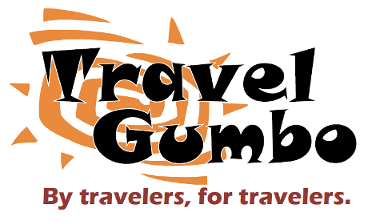
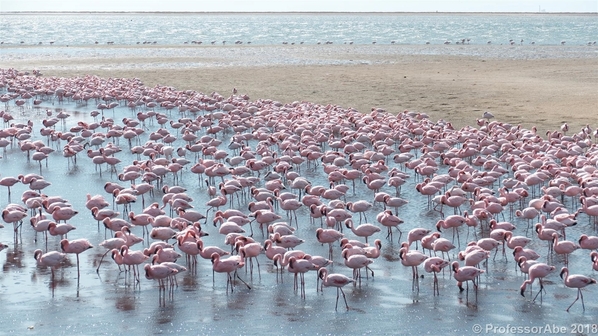

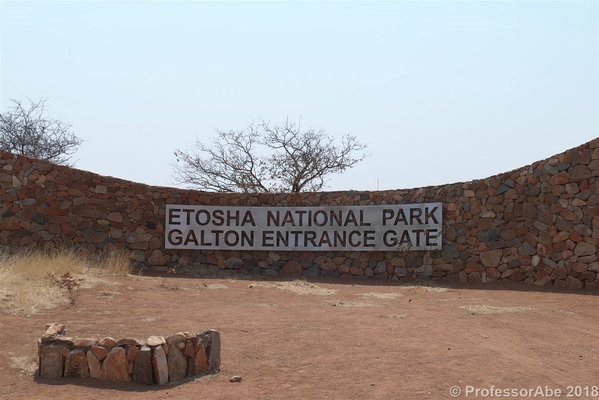
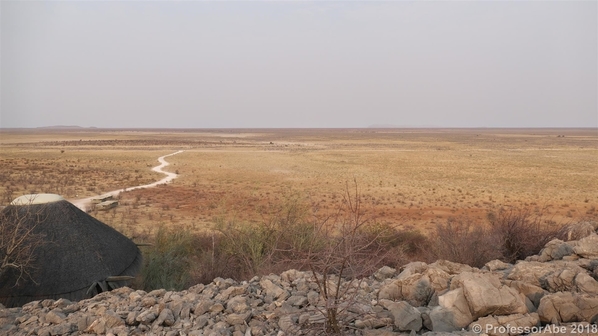
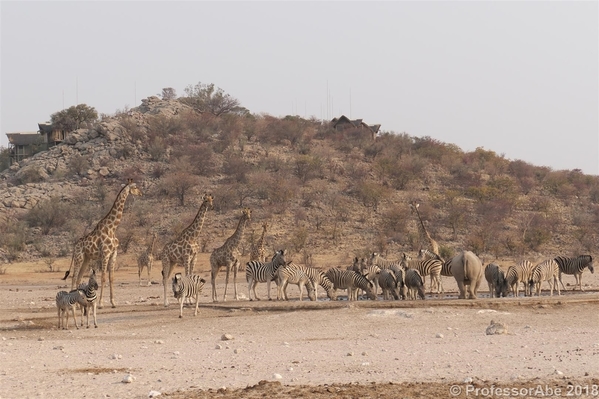
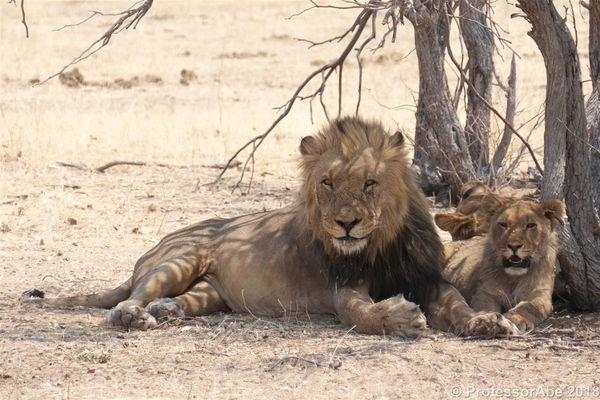


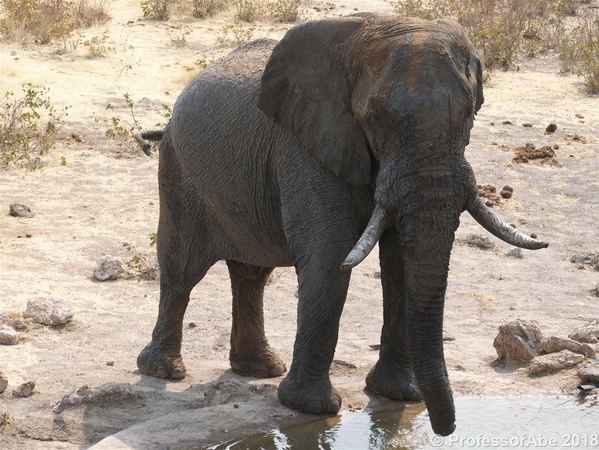

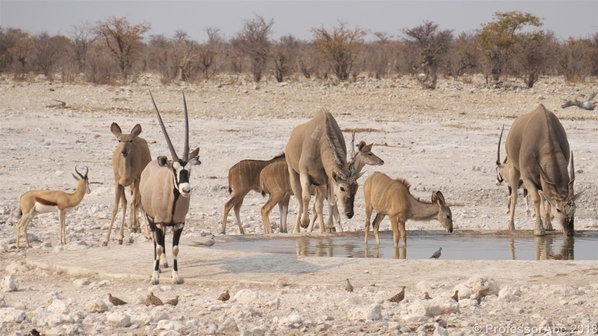
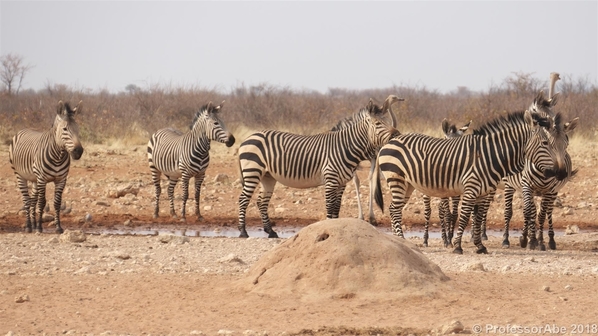
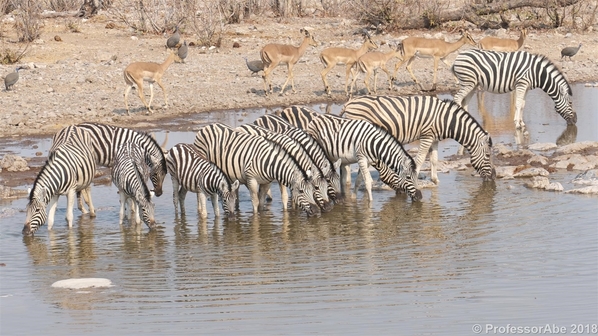
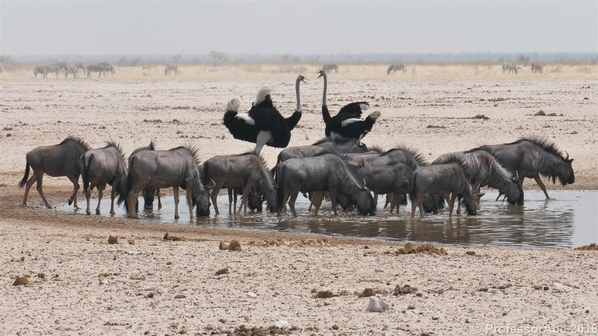




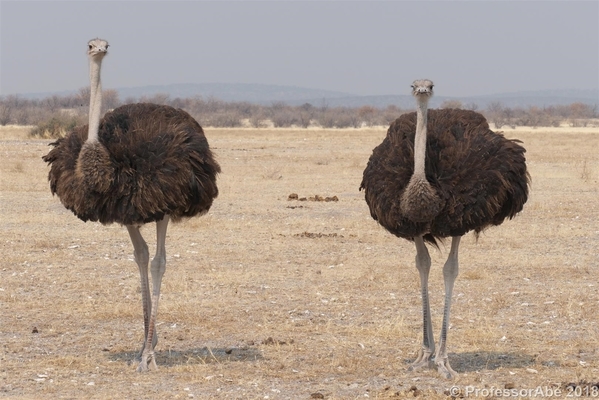
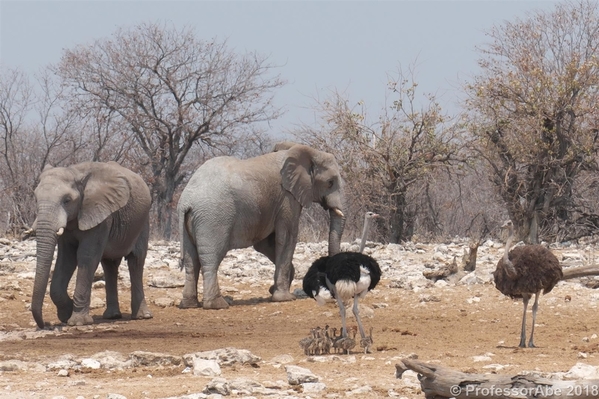

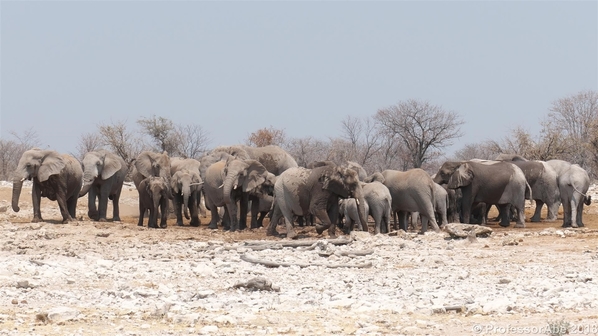







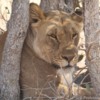
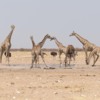

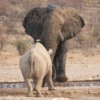




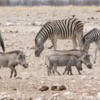
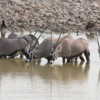
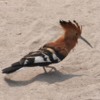
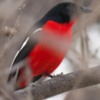


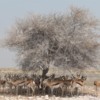

Comments (0)